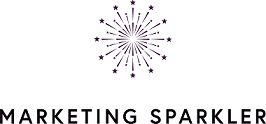In order to have a business, you need to have something to sell. I think we can agree on this right?
When many entrepreneurs start out, they often sell their knowledge. People often need advice and expertise to help them solve a problem. After having a conversation with someone who needs help, a not-yet entrepreneur who sounds like an expert is often asked “how much would you charge to help me ” or something along those lines.
Has this ever happened to you? Have you had a conversation with someone, they ask what you would charge, and you have to do some quick thinking on the fly? If you can think on your feet, you come up with a fee and a service package on the spot. Yeah, I’ve done this!
How Many Entrepreneurs Get Their Start
This is probably the most common way many service-based entrepreneurs get started, myself included. Many of us stumble into entrepreneurship as a result of people asking questions that we can answer. Even if we can’t think of a fee and service package the first time the question is posed, when we realize people keep asking us questions, we start to think, maybe I should charge for this.
No time to read the full post? Listen to this episode of the podcast:
With the advent of this here world wide web of folks, experts are literally a click away, touting their knowledge and offering services to help people solve problems. The more people you talk to, the more people that should ask the infamous “how much do you charge” question.
As your service business grows, your time and availability starts to change. This is when life can get a bit tricky. After all, if you’re serving clients one-on-one, you only have so many hours in the day. You have to correspond with clients, run the other parts of the business, and still have a life.
How to Decide What Products to Create
One of the ways you can use to free up some of your one-on-one time with clients is to create products to sell so that you can make money. The type of products you sell have everything to do with who your audience is, how they shop, how much money they have to spend, and how they prefer delivery to be handled. That’s right; it’s all about your customer, not you. You choose the audience and your niche after much research, then the audience and your niche chooses everything else.
Whether you already have products to sell, or you’re looking to create your first product to sell, you have to figure out what products to create to serve your audience.
No matter what your business model is, it’s great to have products that you can sell to your audience that are essentially made once, and sold many times. As you know, giving your customers personalized service can take a lot of time, and while you want them to feel as if you are giving them personal care, that personal care could in all reality be very expensive. That’s where products come in.
[Tweet “When creating a product, think about what your customer WANTS, not what you think they need.”]
Before you go creating a product, whether it’s a physical product, an ebook, a group program or some other thing you’ve been wanting to create, take a step back. Think about what your customer wants, not what you think they need. Then follow these steps to create a product, or tweak an existing product, to serve your audience. Give ’em what they want!
1. Know Your Audience
All product creation starts with researching the audience. You want to be able to know your audience inside and out. You need to know their hopes, dreams, fears and their joys. What makes your audience tick? What keeps them up at night? Which problems are they trying to solve? If you don’t know, you can’t create products that they want to buy.
2. Define Their Pain Points
As you research your audience, you should be able to name at least three to four pain points or problems that need to be solved that fit in with your expertise. Once you name them, you can start creating products to fill those needs. The purpose of your product should be to solve a problem, or fill a need.
3. Seek High Demand, Low Supply Products
As you research your niche you’ll discover holes in what’s available to help your audience. Ideally, you want to create a product that fills that hole that is in high demand but has a low supply. One way to do this is to look at your competitors’ offers. Are their products missing key points? Have they neglected to include critical resources or insights? When you pair the options currently in the marketplace, with the demands of your audience, you can find the sweet spot to create the products that your audience is asking for.
4. Understand the Price Points Your Audience Can Afford
Part of understanding who your audience is, is to also know what your audience can afford to pay for various products that you create. Knowing a price point can help you decide what kind of form the product will take, and how much you’ll invest in creating it.
[Tweet “When building a pricing strategy, identify the price point your audience can afford.”]
5. Create a Product Funnel
A product funnel is simply a series of products that increase in value and price. A typical product funnel starts with a free or low-priced product, and moves up to the highest priced product. An example for a life coach might be a free checklist for signing up to a newsletter, a low cost report, a higher cost longer ebook, a higher cost ecourse, a higher cost membership site, and finally the most expensive could be the one-on-one coaching.
6. Limit the Number of Products
Don’t confuse your audience with too many products. Each product should build off the other and answer those pain points you discovered. If your product solves problems for your audience, then the product will be a winner.
[Tweet “Do you have too many offers? Don’t confuse your audience with too many products.”]
If you want to get paid today for work you did six months ago, start creating products exclusively for your audience that match your niche. It doesn’t matter if you’re a service provider, a life coach, or something else entirely – you can find a way to create products that your audience will buy if you go through the steps, listen to your audience, and create products that solve their top-of-mind problems.
Ciao,
Miss Kemya


